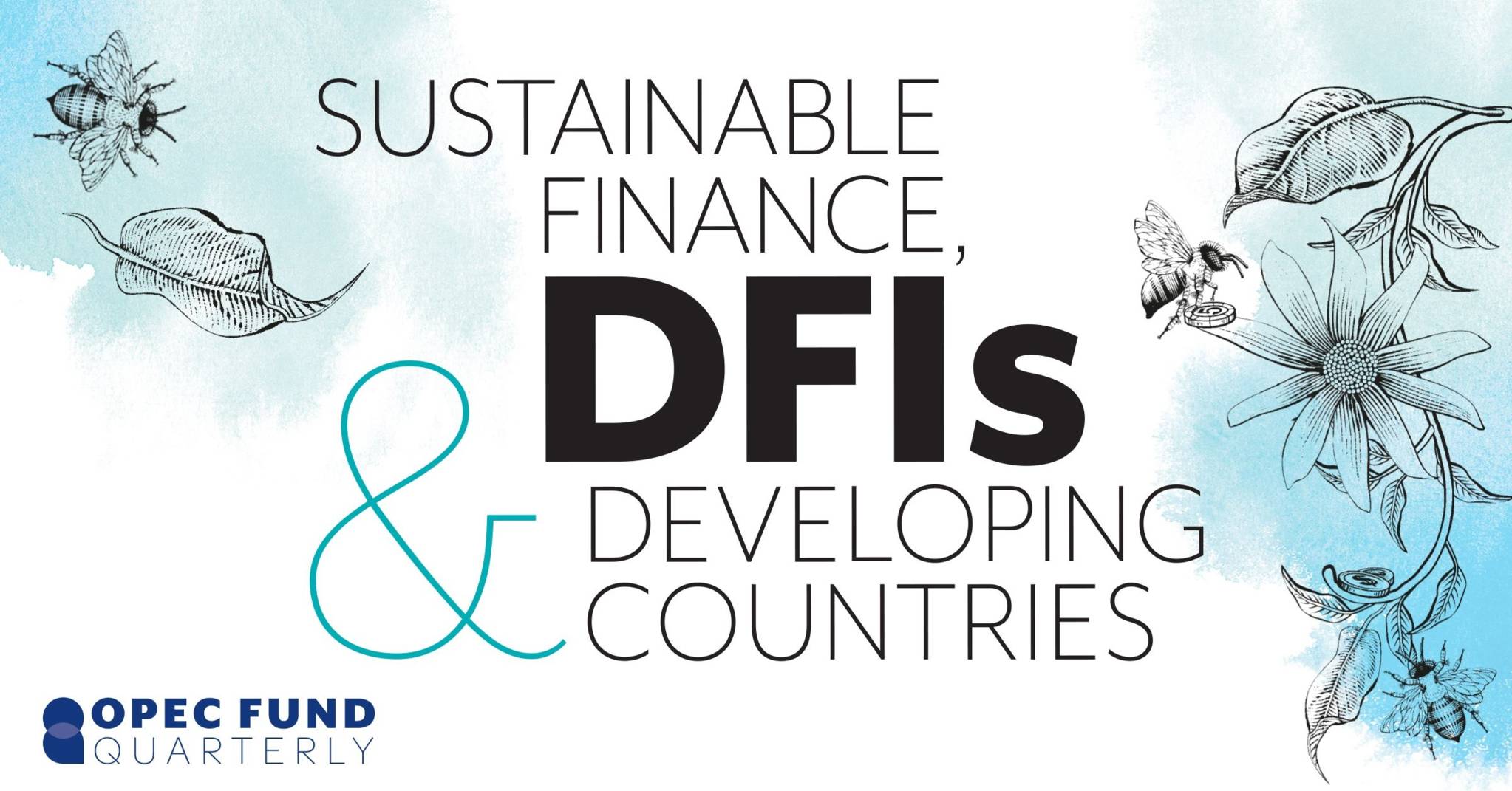We use Cookies. Read our Terms
- News
- Sustainable finance, DFIs and developing countries
Sustainable finance, DFIs and developing countries

As published in the 02/2020 issue of the OPEC Fund Quarterly.
Sustainable finance and green investments have been steadily growing since the adoption of the 2030 Agenda, the SDGs and the Paris Agreement on Climate Change.
In 2019, green investments grew by 34 percent and reached US$30.7 trillion worldwide, driven by the scale and urgency of the challenge of financing sustainable development. However, additional investments are required to 2030, including around US$5-7 trillion a year to implement the SDGs globally. The annual investment gap in major SDG sectors in developing countries alone has been estimated at around US$2.5 trillion per year.
Only a fraction of this finance can realistically come from public sources. A diversification of financial resources is required, combining different forms of capital and integrating ESG criteria into investment decision-making. Mobilizing additional capital from the public, private and not-for-profit sectors will help catalyse and leverage sustainable development projects.
Development finance institutions (DFIs) and international financial institutions (IFIs) have a central role to play, too. The Addis Ababa Action Agenda (AAAA) on financing the post- 2015 SDGs called for an intensification of efforts through development cooperation to bridge the financing gap.
In developing countries, mobilizing sustainable finance and green investments can be challenging due to the business environment, which can include weak institutions and unsubstantial governance, in addition to lack of investment incentives. To unlock investment opportunities, developing countries need to enable market regulation, implement systematic national action plans and support new policies. This can be more difficult still in fragile and conflict-affected countries.
Despite this, there are examples of good progress. Many developing countries, such as Brazil, Nigeria and Bangladesh, have begun improving the efficiency and accountability of financial institutions and markets, and upgrading governance architecture to mainstream sustainable development across financial decision-making. For instance, Brazil’s central bank has released several resolutions on socio-environmental responsibility guidelines applicable to all financial institutions.
National strategies and roadmaps align the financial system with the needs of sustainable development in other developing countries such as Mexico, Vietnam and Kenya, too. These roadmaps involve both public and private actors, and combine market-driven approaches with policies, regulations and standards. For instance, in Kenya, the Climate Change Act is mobilizing both public and private sector actors to transition to a low-carbon economy and the Green Economy Strategy and Implementation Plan (GESIP) strengthens calls for sustainable development.
To meet the 2030 Agenda and the Paris Agreement on Climate Change, there is a need to shift from traditional finance to sustainable finance. The SDGs provide a global framework to embed sustainability into projects, programs, processes and policies, taking into consideration economic, social and environmental priorities. Solving complex sustainability challenges requires effective financial interventions and enhanced cooperation between countries. The public and private sector – including IFIs and DFIs – must play a key role in ensuring the alignment of financial resources with development priorities and in supporting the achievement of long-term financial sustainability.
The United Nations Environment Program (UNEP) defines sustainable finance as financial services, products and processes – as well as institutional and market arrangements – that contribute directly and indirectly to the delivery of the Sustainable Development Goals (SDGs).